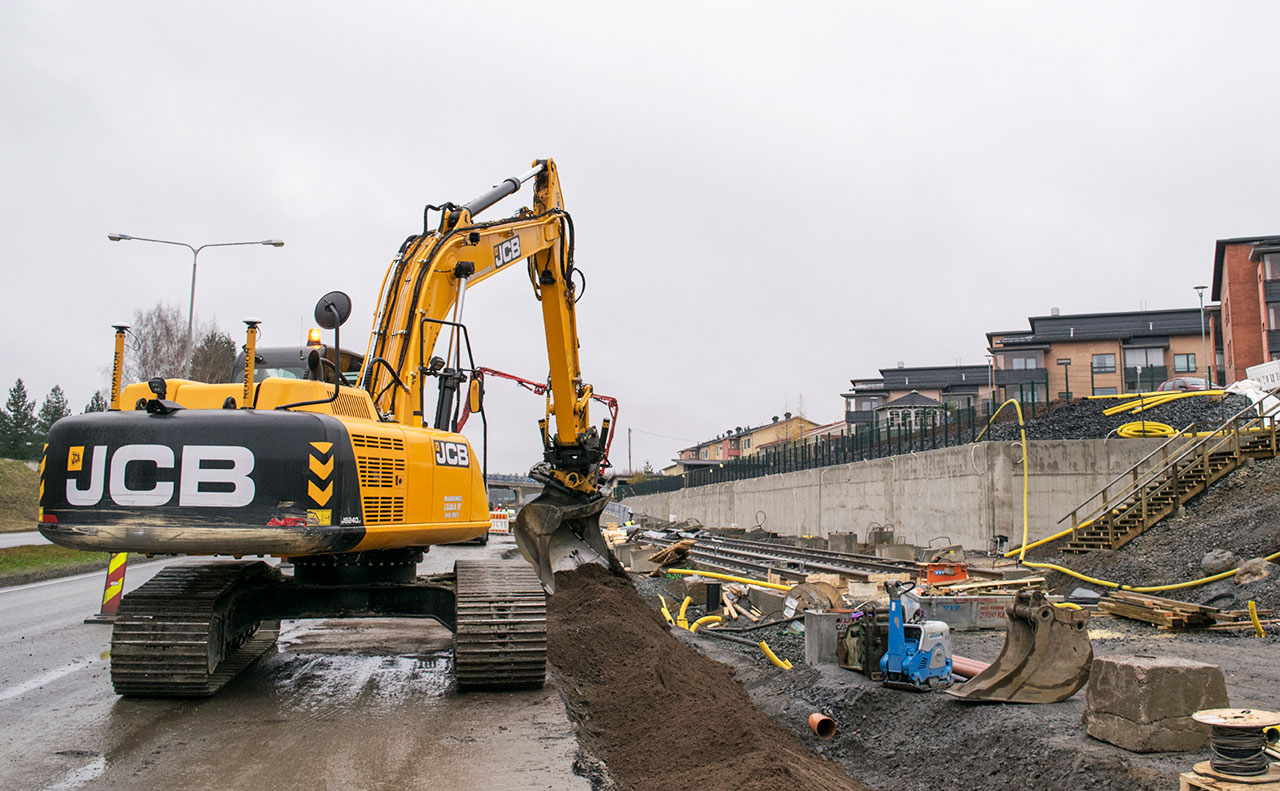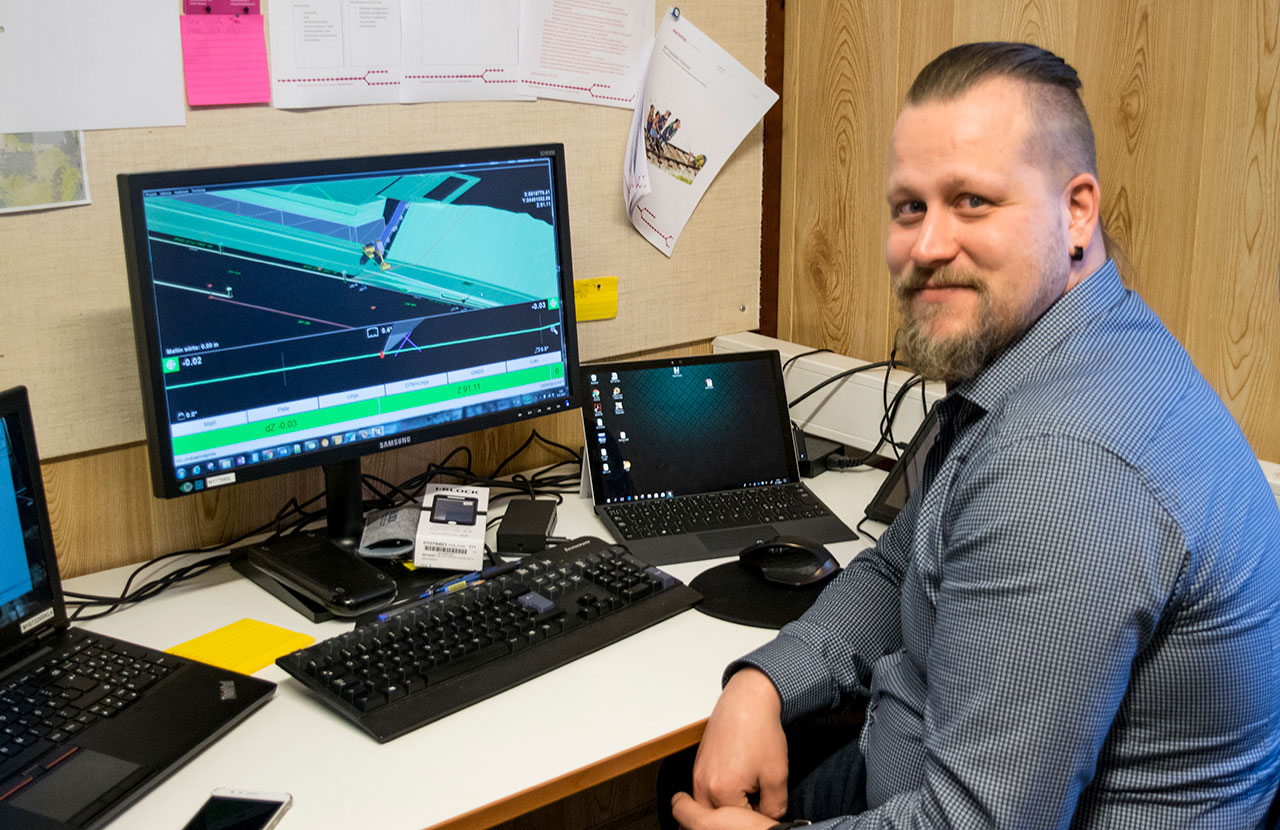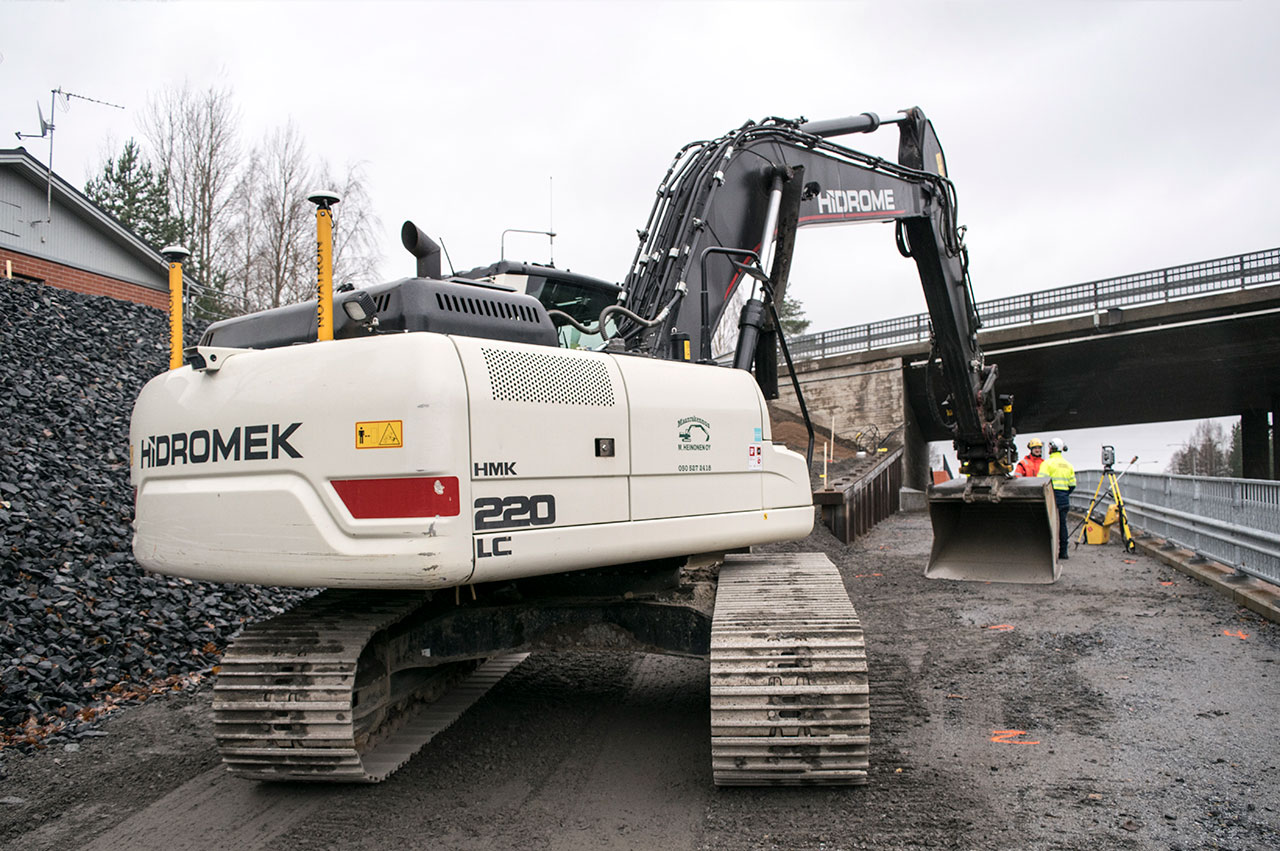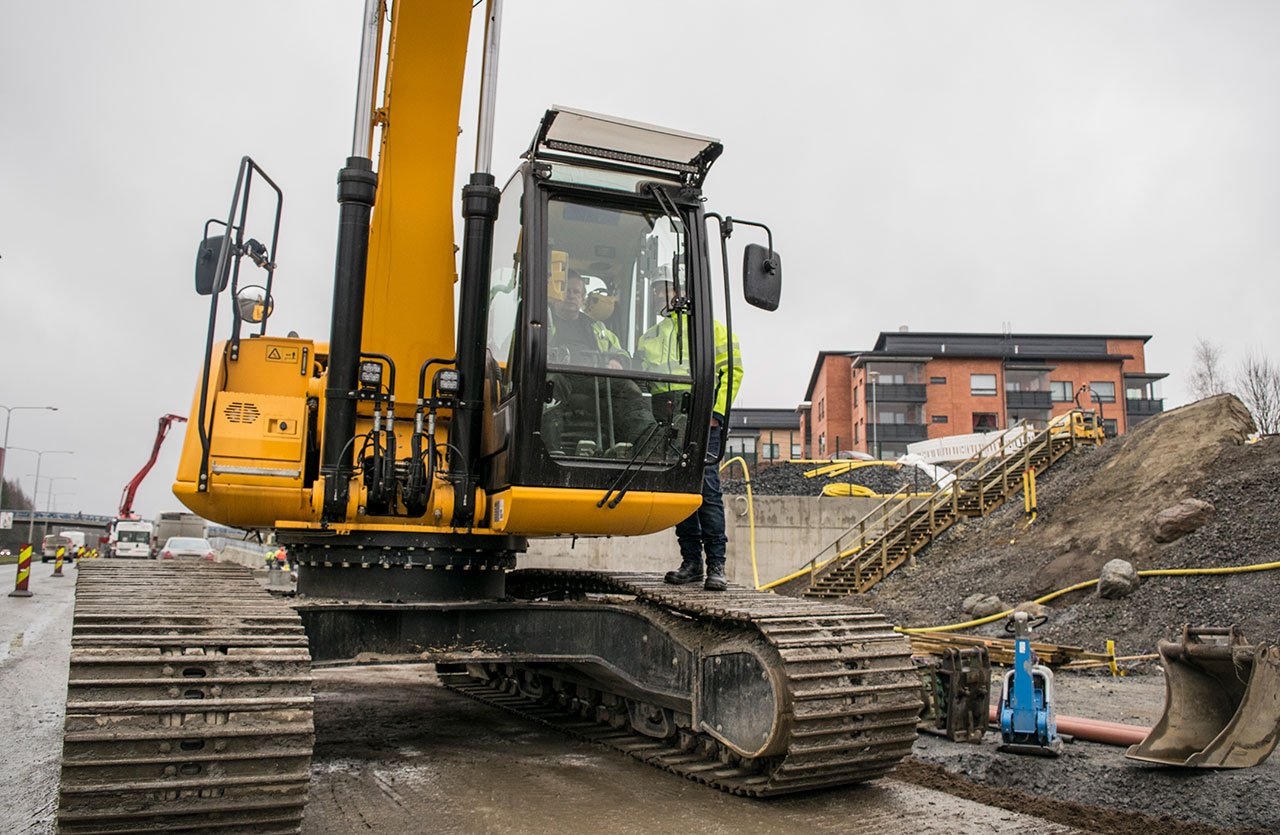The Tampere tramway project – 2D maps replaced by 3D models
January 24, 2018
In the spring 2017, when the sun started shining into Finnish homes, fenced construction sites with workers and machines started popping up in the streets of Tampere, Finland. This was due to the tram line construction project in, which started in early February with earthmoving and moving underground pipes and cables from below the future tram lines.

For VR Track surveyor Teppo Viinikka, the tram construction site is unique. The tram line is being mostly constructed by utilising building information modeling and intelligent machine control without fiddling with traditional stalkes or maps. The work in the centre of Tampere focuses on traditional surveying, but machine control is utilised there as well, as far as the excavators have access to satellite coverage.
Teppo Viinikka is one of the surveyors of the tram line construction project: his responsibilities include support operations for machine control and the corresponding measurements in the construction site’s third segment. In addition, he acts as the primary user of the infraBIM cloud service in project management.
Before transferring to Tampere, Teppo had accumulated ten years of experience in construction surveying, but machine control systems were relatively new to him. The tram construction project in Tampere is the first project in which he has been able to work with these systems full time. In the past eight months, the system has become like an extra limb for Teppo, because all the phases in the work site from design to implementation utilise building information modeling, or BIM.

“BIM has changed the tasks of the surveyor drastically; work is no longer carried out in the field, but the data is processed in the office.” – Surveyor Teppo Viinikka, VR Track
The construction site has been divided in five smaller construction segments. The third segment, in which Teppo is currently working, has a length of approximately four kilometres including seven new bridges, four old bridges to be altered to accommodate the tram line, seven new supporting walls and Hervanta highway with heavy traffic. Most of the excavators operating in the segment are equipped with Xsite® PRO 3D machine control systems.
Information models, cloud services and machine control
In the tramway project, the implementation models drafted by the designer are taken to the project bank, where surveyors can review the materials. After review, the materials are transferred to an infraBIM cloud service, which synchronises the material automatically into the Xsite® PRO 3D machine control system. The three sections had a total of 200 model files and dozens of background maps and auxiliary materials, which needed a concise folder structure in the infraBIM cloud service in the beginning of the project. If there are any changes to the machine control models, the surveyor transfers the updated model to the infraBIM cloud service, from where it is transferred in real time to the Xsite® PRO 3D machine control systems, which eliminates any unnecessary waiting periods.

Wheel loaders and dozers and excavators are used in the third segment of the tramway site. Most of the excavators are equipped with Xsite® PRO 3D machine control systems.
MOBA involved through support
Novatron, A Moba Group company in Finland has been involved in supporting the tramway site from the start. Because this is a pilot project, many things had to create from scratch, such as surveying instructions and the infraBIM cloud service’s folder structures. In addition, new software has been taken into use. Novatron’s BIM experts and the Xsite® PRO 3D machine control systems have been a great help in these endeavours.
In the beginning of the project, the Novatron BIM experts organised modelling training for the operators in the work site. As the project progressed, they guided the specifications of the material assigned to the customer at the end phase of the project. In addition to expert services and machine control systems, the project has utilised the Xsite® PAD application that surveyors can use to monitor the progress of the site in real time and determine control points for the drivers. “Xsite® PAD is the easiest way to inspect the compatibility of the designs with the drivers’ screens, as the surveyor has the same view as the drivers in their excavators,” Viinikka says. “The Xsite® PAD is also a little more versatile and faster than similar devices offered by larger manufacturers, and that is why it has become quite popular in the project.”
According to Viinikka, one of the most significant benefits of Xsite machine control systems is their ease of use: “You have one screen for data processing, it gives you plenty of information at a glance and you are able to do several things at once. The entire chain is under control,” he says.
According to Viinikka, one of the most significant benefits of Xsite machine control systems is their ease of use: “You have one screen for data processing, it gives you plenty of information at a glance and you are able to do several things at once. The entire chain is under control,” he says. He also salutes the remote support, which offers help quickly. “I used to call support especially in the beginning of the project to make sure I understood how the system works. All of my questions have been answered, and I can feel that the guys there really enjoy their work, help is offered immediately,” Viinikka continues.
When asked what Viinikka feels are the most important advantages of the Xsite® PRO 3D system in terms of the tramway site, he answers without hesitation:” More efficient, more accurate and faster.” Without modeling, the project would drag on and designs would not be as compatible, they would clash, and the drivers would have to wait around when anything unexpected happened. Xsite systems free up the surveyors’ time for other tasks on site and provide accurate information for the operators on design and what’s to come. If necessary, both operators and surveyors can perform additional measurements for design regarding unexpected structures uncovered from below ground, for example. “Data is moving constantly from the designers to the site and vice versa,” he says.
Viinikka will continue working on the tramway until 2021, when the first phase of the project will be complete.

”The surveyor can see the progress of the machine-controlled site in real time, and any anomalies can be tackled quickly,” Teppo Viinikka (right) says.

